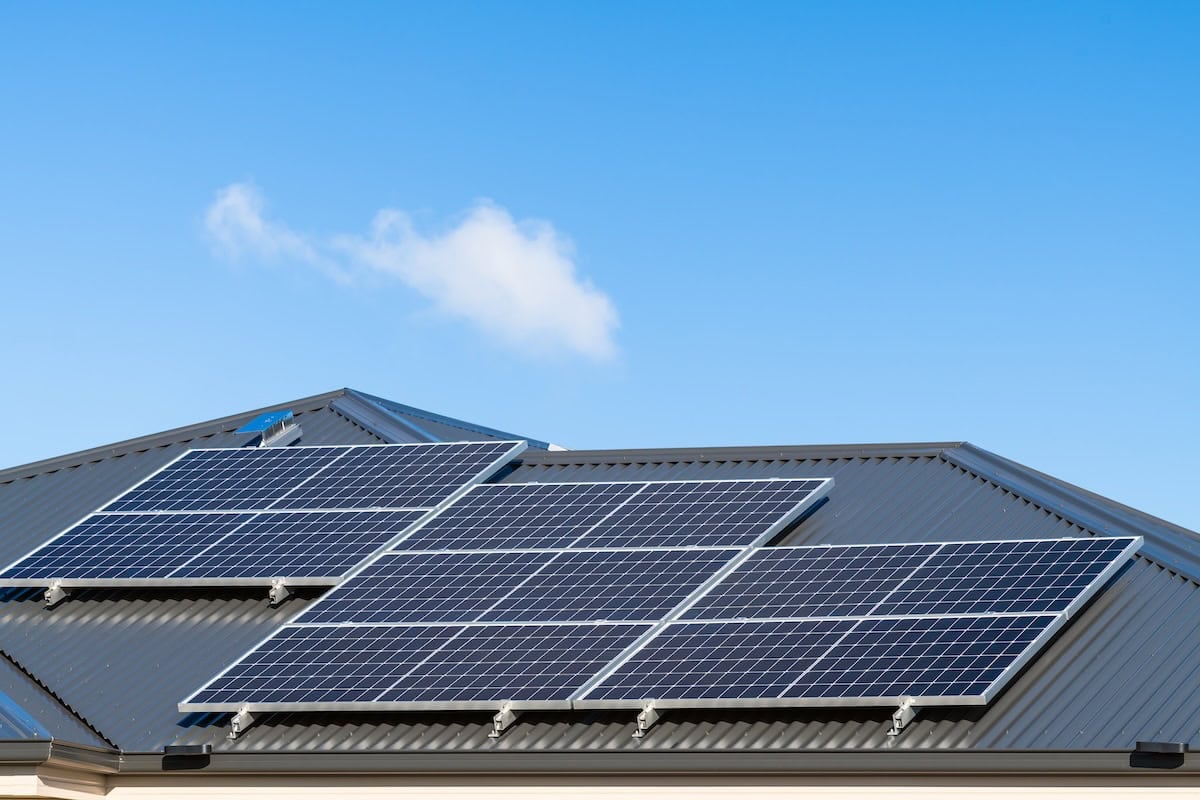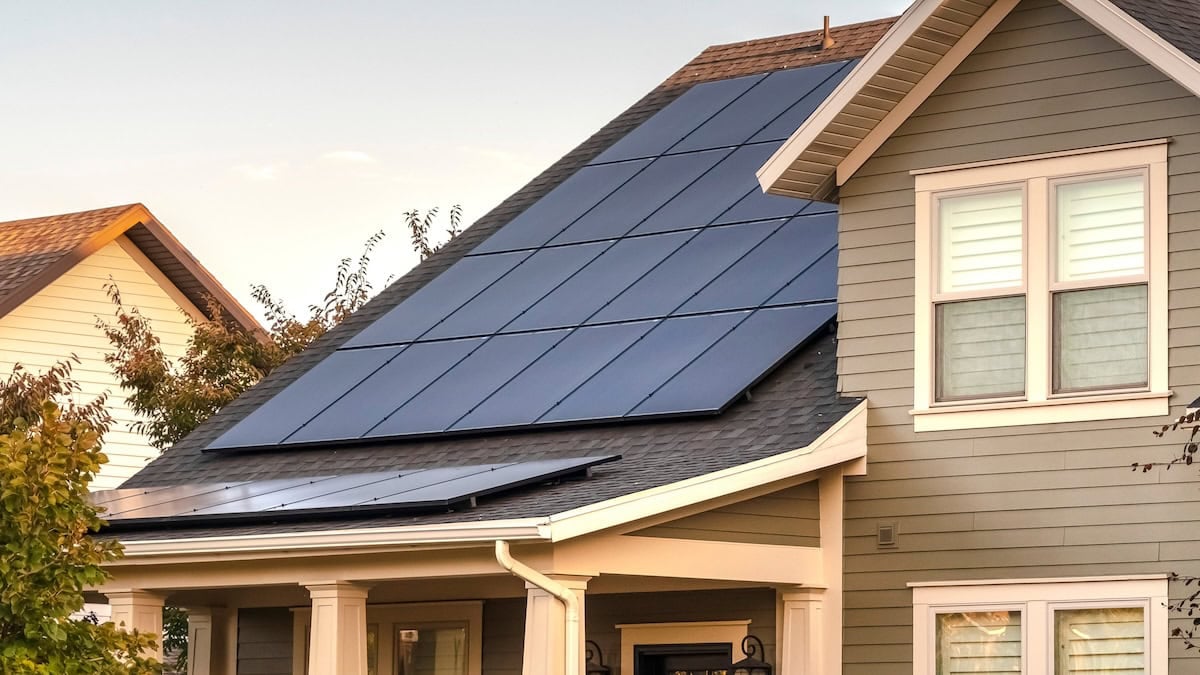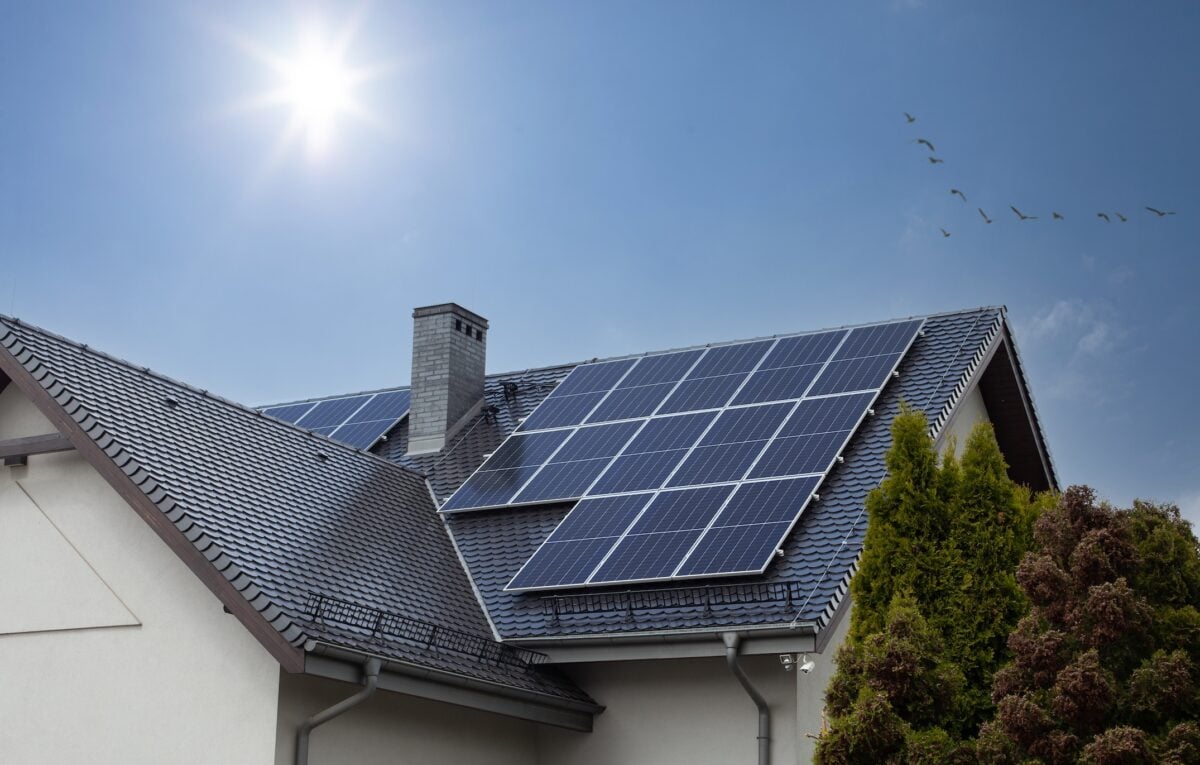Solar energy has become one of the most popular ways to reduce electricity bills and create a more sustainable home. With advancing technology and decreasing costs, 2025 offers homeowners more solar roofing options than ever before. This comprehensive guide will explore the best solar panel roofing solutions available, helping you make an informed decision for your home’s energy needs.
We’ll cover everything from traditional solar panels to innovative solar shingles, discuss key factors to consider when choosing a system, and provide insights into costs, benefits, and installation considerations. Whether you’re building a new home or upgrading your existing roof, you’ll find the information you need to select the best solar panel roofing solution for your specific situation. Here’s what you’ll learn:
- Understanding solar roofing technology
- 5 best solar panel roofing options for 2025
- Cost analysis and return on investment
🔎 Understanding Solar Roofing Technology

Solar roofing technology has evolved significantly over the past decade. Modern systems are more efficient, durable, and aesthetically pleasing than their predecessors. Solar roofing captures sunlight and converts it into electricity through photovoltaic cells, which can power your home and potentially feed excess energy back into the grid.
The efficiency of solar panels is measured by how much sunlight they can convert into usable electricity. Most residential solar panels today achieve between 15-22% efficiency, with premium models reaching even higher rates. This means you can generate more power from a smaller roof area compared to older systems.
Key Factors to Consider When Choosing Solar Roofing
Before selecting a solar roofing system, consider these important factors:
- Roof Condition: Ensure your roof is structurally sound and can support the weight of solar panels. Address any necessary repairs or replacements beforehand to avoid costly panel removal and reinstallation later.
- Orientation and Angle: South-facing roofs receive the most sunlight, making them ideal for solar panels. East and west-facing roofs can also work well with proper design and high-efficiency panels.
- Available Space: Evaluate how much roof space is available for a solar installation, as this impacts the size and capacity of the system.
- Local Climate: Consider sunlight hours and weather patterns in your area to determine the best type of solar system for optimal performance.
- Incentives and Policies: Check your local utility company’s net metering policies and explore available rebates or incentives to maximize your investment.
⭐️ 5 Best Solar Panel Roofing Options for 2025

Solar panel installations are a sustainable and cost-effective way to reduce energy bills while lowering your carbon footprint. As technology advances, choosing the right option in 2025 can maximize efficiency and long-term savings.
1. Traditional Solar Panels
Traditional solar panels remain the most popular choice for residential solar installations. These panels are mounted on top of existing roofing materials using racking systems. They offer excellent efficiency rates and are typically the most cost-effective option.
Monocrystalline panels are the premium choice, offering the highest efficiency rates and taking up less roof space. They perform well in low-light conditions and have a sleek, uniform appearance. Polycrystalline panels provide good performance at a lower cost but require more roof space to generate the same amount of power.
2. Solar Shingles
Solar shingles, also known as photovoltaic shingles, integrate directly into your roof structure. They serve as both roofing material and energy generator, creating a seamless appearance. Tesla Solar Roof and GAF Timberline Solar are leading options in this category.
These systems are ideal for new construction or complete roof replacements. While they typically cost more than traditional panels, they eliminate the need for separate roofing materials and can increase your home’s aesthetic appeal and property value.
3. Thin-Film Solar Panels
Thin-film solar panels are lightweight and flexible, making them suitable for roofs that cannot support the weight of traditional panels. They can be integrated into various roofing materials and work well in high-temperature environments.
Although thin-film panels generally have lower efficiency rates than crystalline panels, they perform better in partial shade conditions and maintain their performance in extreme heat. They’re an excellent choice for certain roof types and climate conditions.
4. Building-Integrated Photovoltaics (BIPV)
BIPV systems replace traditional building materials with solar-generating alternatives. These can include solar roof tiles, solar canopies, and solar facades. They offer the ultimate in aesthetic integration while providing clean energy generation.
BIPV systems are typically more expensive than traditional solar panels but can be cost-effective when replacing roofing materials that would need replacement anyway. They’re particularly popular in areas with strict aesthetic requirements or homeowners’ association guidelines.
5. Hybrid Solar Systems
Hybrid systems combine solar panels with other renewable energy technologies, such as solar water heating or small wind turbines. These systems can maximize your renewable energy production and provide greater energy independence.
Some hybrid systems also include battery storage, allowing you to store excess energy for use during cloudy days or power outages. This combination provides the most comprehensive renewable energy solution for your home.
💵 Cost Analysis and Return on Investment

Understanding cost analysis and return on investment (ROI) is essential for making informed financial decisions. It helps evaluate the efficiency of spending and ensures resources are allocated for maximum profitability.
Understanding Solar Roofing Costs
Solar roofing costs can vary widely depending on the type of system, the size of your installation, and specific local factors such as labor rates and permitting fees. For a typical home, traditional solar panel systems generally cost between $15,000 and $25,000 before applying any incentives or rebates. However, if you’re considering more integrated options like solar shingles or Building-Integrated Photovoltaics (BIPV), expect to pay 20-50% more. These options not only generate energy but also offer additional value with improved aesthetics and seamless integration into your roof design.
When planning your solar investment, it’s essential to factor in these cost variances while considering the long-term benefits of energy savings and increased property value. While higher-cost options like BIPV may seem expensive upfront, they can pay off in other ways, such as elevating your home’s curb appeal or reducing the need for additional roofing materials.
Incentives and Tax Credits
One of the most significant benefits of going solar is the availability of financial incentives that can dramatically reduce upfront costs. The federal solar Investment Tax Credit (ITC) currently allows homeowners to deduct 30% of their solar installation costs from their federal taxes. For example, a $20,000 system would qualify for a $6,000 tax credit, bringing your effective costs down to $14,000.
In addition to the federal ITC, many states and local utilities offer their own incentives, such as tax credits, rebates, or performance-based incentives. Some utility companies might also provide net metering programs, which allow you to sell excess energy generated by your solar system back to the grid, further offsetting your costs. Together, these incentives can significantly lower your upfront investment and improve the financial feasibility of going solar.
Calculating the Return on Investment
Solar installations are not just an upfront expense—they’re an investment that pays off over time. Most homeowners experience a return on their solar investment within 6 to 10 years, primarily through savings on monthly electricity bills. For example, if your solar system helps you save $1,500 annually on utility bills, you could recover a $15,000 investment in about ten years. After this payback period, your system will continue producing free electricity for years to come.
Solar systems typically have a lifespan of 25+ years, meaning the majority of their operational life will be savings after the payback period. Over time, this can result in tens of thousands of dollars in reduced energy costs. Additionally, installing solar may increase your property value, as energy-efficient homes are highly desirable in today’s real estate market.
Long-Term Financial and Environmental Impact
Beyond financial savings, investing in solar energy contributes positively to the environment by reducing your carbon footprint. By generating clean, renewable energy, you can decrease your reliance on fossil fuels, which helps combat climate change. Over the system’s lifetime, this environmental impact only adds to the overall value of your investment.
In conclusion, while the upfront costs of solar roofing may seem significant, incentives, tax credits, and long-term savings make it a financially and environmentally sound decision. Whether you choose traditional panels or opt for integrated solutions like solar shingles, the benefits of going solar extend far beyond your utility bills.
👨🔧 Why Choose K&D Roofing for Your Solar Installation
When it comes to choosing the best solar panel roofing for your home, partnering with a team you can trust makes all the difference. At K&D Roofing, we bring decades of roofing expertise and a commitment to excellence in solar technology. From seamless installations to industry-leading warranties, we deliver reliable, high-quality solutions tailored to your needs and budget.
Our licensed, GAF Master Elite-certified team ensures every project is handled with precision and care, so you can enjoy the benefits of solar energy for years to come. Ready to make the switch? Contact K&D Roofing today for your free solar consultation and take the first step toward a more sustainable future!

